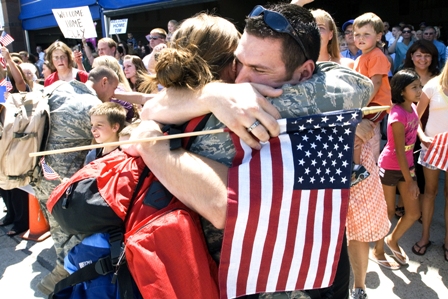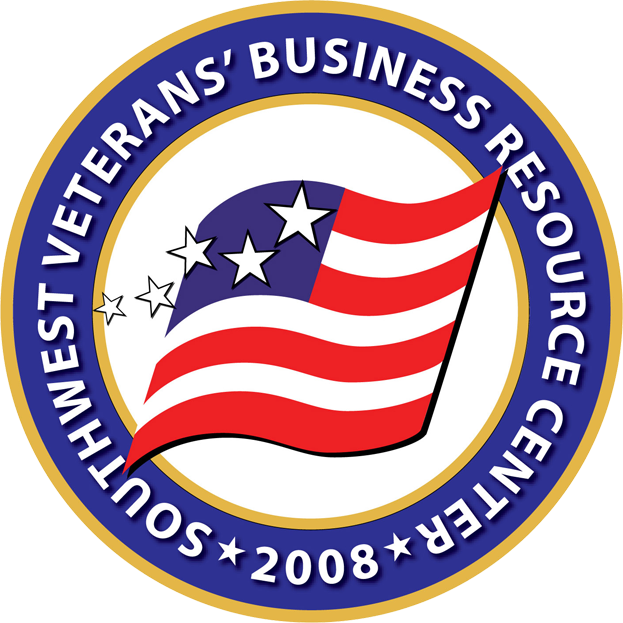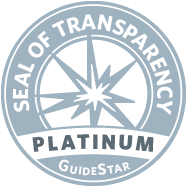May 14, 2010
This week, NPR aired a
series of reports on the new wave of veterans: men and women who
have served in Iraq and Afghanistan. They have presented the Department
of Veterans Affairs with new challenges: a bigger, younger clientele and
more women than ever before. There are also more vets with brain trauma
and more with post-traumatic stress disorder.
Veterans Affairs Secretary Eric Shinseki, who is
trying to reinvent his agency so it can meet the needs of the new
veterans, brings impressive credentials to his office. He's a former
Army Chief of Staff, the one who said we would need hundreds of
thousands of troops in Iraq. He's the first American of Asian ancestry
to achieve a four-star rank — his family is Japanese-American. And he is
no stranger to the problems of veterans: In Vietnam, a land mine took
off part of his foot.
Shinseki sat down with NPR's Robert Siegel to
talk about his attempt to overhaul the VA — and i answered some of the
concerns that veterans raised earlier this week during our series, The
New Veteran.
Robert Siegel: In Part
1, Iraq veteran Brian Hawthorne said he has waited for two years
for the VA to process his claim for PTSD. He told NPR: "We have to
realize that if the VA's not your friend, who is?" How do you fix a
culture so that veterans like Hawthorne just assume that the VA is their
friend?
Eric Shinseki: I would explain
to Brian that it's more than just about friendship. This is an
obligation that the nation owes those who have served. By my
responsibilities, I am the one charged with ensuring that those
obligations have been met. We look at this as a relationship with
clients, not just customers. Customers have an opportunity to shop
around and decide which choices they want to exercise. A relationship
with a client is different. Clients have already invested in this
relationship; our obligation is to fulfill that obligation. And so to
Brian's concerns about how long it takes to process some these things:
My concerns as well. It's what we've been after for the past year. Some
of this has built up over time. But we intend to do something about it.
The number of outstanding claims at the
VA for service-related disability is around 500,000 — and 40 percent
have been waiting for four months. How do you break down the backlog?
I'll accept those numbers. They seem to fall
into the rough category as I recall. I would tell you that last year we
processed 977,000 claims. And then received about a million new claims
in turn. So this is not a case of sitting for extended periods of time.
We do exceed the 125-day mark, but we move them as well. This is a big
numbers game, so we have to take a bold approach to this. In the past,
our approach has been more claims, hire more people. Today, we have
11,400 persons adjudicating claims. That's a significant number. We have
just received authority to hire about 4,000 more people to help us in
this area. At some point, we have to get beyond the brute-force approach
to this. We have to get better business processes, automation in place.
We have to change the relationship between VA and the veteran where
they see us as advocates for them and so the level of trust is better.
Because for every claim we adjudicate where the veteran feels there is a
requirement to appeal the decision, that just compounds our work.
In Part
2, NPR's John McChesney reported that the first encounter between
the VA and the veteran is a 23-page application. It's not a symbol of
advocacy. Can you do anything about that? Or is it inevitable that your
first encounter is a mound of paperwork?
I'm one of those who went through that process,
so I have firsthand knowledge about what that means. It's not a good
welcome and we intend to do something about that. We have to simplify
the process and get our decisions down to what are the essential
elements of information we need to adjudicate a claim at a high quality
on behalf of the veteran.
In Part
2, Vietnam veteran John Wood said: "It took me from 1972 to 2006
for the VA to admit that I had post-traumatic stress disorder. They were
saying that I couldn't prove that I had any combat status in Vietnam,
and so it couldn't possibly be post-traumatic stress disorder because I
wasn't in combat, which I was." Can the VA shift the burden of proof?
Much of what I bring to this responsibility is
I'm part of the same generation he is and so I have a good number of
friends who went through the process of trying to have some of their
issues recognized. PTSD was at that time not something that was
recognized. So I think that was probably widespread. And yet throughout
history, PTSD has always been part of what the combat soldiers for sure,
sailors, Marines, for sure, have dealt with. But as the environment of
warfare has changed, there are no safe areas today as we describe them
in Iraq and Afghanistan. Well, those stresses apply to more than just
the combat front-line soldiers. And that's part of the adjustment here.
Both to the fact that PTSD is a real issue — and that many more are
exposed at a level of stress that produces these outcomes. We are
putting in place recognition of the fact that under the current
operation, service in the combat zone itself can be seen as a precursor
for PTSD.
In Part
1, Carolyn Schapper, a California native who deployed to Iraq at
the height of the insurgency in 2006, suggested a women-only counseling
session. Schapper said: "A young female veteran walking through the VA
is very aware of herself, cause it's mostly Vietnam veterans. All their
heads turn and they're all watching you. It's very uncomfortable walking
all the way to the back of the hospital to get to this clinic. Because
if you have experienced military sexual trauma that's the last thing
you're going to want to do." How do you respond to that?
I think the active component is 14 percent — and
reserve component is as high as 17 percent. So, yes the population is
changing. In 10 years, we're going to be 15 percent women. Today, we're
about 5 to 6 percent. Ten years is not all that much time. So we are
beginning this process. We've appointed women's program coordinators at
144 of our medical centers. They're important because they're the folks
that will help us understand what programs we need to create and put
into place in the next 10 years. That's everything from integrating
women's health care into primary clinic areas or creating a women's
free-standing clinic. The reason I give you those two offers is because
we've already started this discussion and in some cases, the women at
one hospital want a clinic. In other cases, they choose not to: They'd
rather be integrated into the primary care just like everybody else.
That's their preference; that's what we try to do so that we're not
coming up with a cookie-cutter approach to everything.
During the 2008 presidential election
campaign, Sen. John McCain proposed that veterans be given a card to
take to every center in the country to get treated. A lot of veterans
didn't like that; they wanted their own discrete system. What is the
future of that idea; do you assume that there will always be a discrete
medical system or could there be a benefit you get which pays for your
health care for the rest of your life?
I would offer that there will still be major
conflicts in the future of this country. It's not assured, but there is
some opportunity for those kinds of concerns. And as long as we have
that potential, I just think you need a health care system that's
prepared to deal with the large-scale consequences of that and not find
out after the fact that we've given up capabilities that were for good
reason put into place after large conflicts like World War II, Korea,
Vietnam. This is about meeting the obligation, as I indicated, to the
veterans. And it's also a business proposition. But the obligation is an
important part of this.
 A welcoming home for our Troops.
A welcoming home for our Troops.

